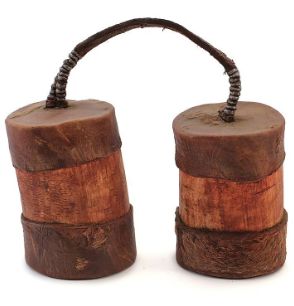From war to tradition
This is a Herero dress. Having been nearly extinguished by the Germans during colonial times, the Herero adapted the dress of the colonizers’ wives to make sure the past would not be forgotten. For this story I am using many pictures taken by photographer Jim Naughten for a photo series about the Herero. Talking to him, he told me: “It is very special to them. It’s a very strong symbol of Herero identity.”
When the Germans occupied Namibia, formerly known as German South West Africa, in the late 19th century, they came with the purpose of ‘civilizing’ the natives living in the area. With this intent, missionary women introduced the European Victorian style dress to the native women who dressed in leather aprons before the European influence.[Kiunguyu 2018]
In 1904 the Herero took up arms in order to reclaim their lands. A German general then gave the extermination order which resulted in the majority of the Herero population being brutally killed. Most of the survivors were placed in work camps, abused and mistreated.[Gilbert & Reynold 2011, p 321] It is therefore known as the earliest genocide of the 20th century.
After the genocide, the Herero split up into several different subgroups, one of them are the Himba people. They continued living their lives as they did before the war, while the Herero continued wearing the dress introduced by the Germans to make sure that this past is not forgotten [McKinley 2013]. By wearing it, Herero women show pride in their roots and worship of their ancestors [Ibid]. It is therefore the women’s responsibility to ensure that the memories are kept alive and carried on.
Related things to this object

](https://micrio.thingsthattalk.net/GTGfW/views/max/128x128.jpg)
](https://micrio.thingsthattalk.net/ReHtz/views/max/185x128.jpg)
](https://micrio.thingsthattalk.net/HSFrm/views/max/172x128.jpg)
